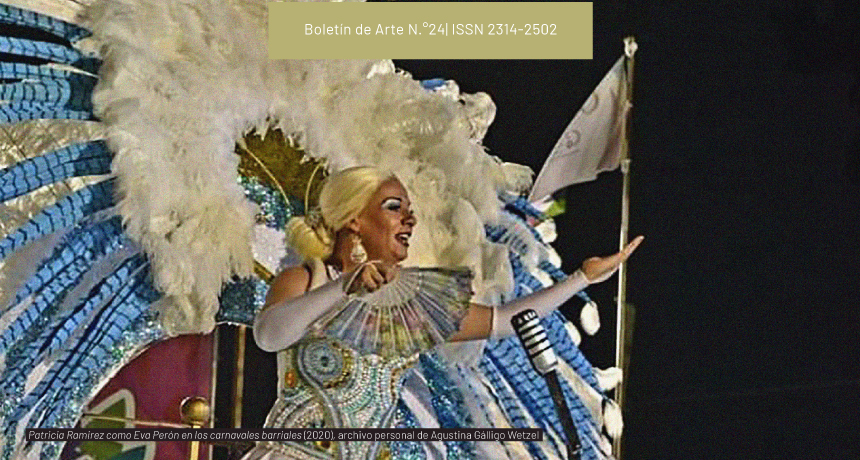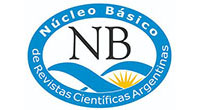Thread and Piece
On Hair Concepts, Feminism and Art
DOI:
https://doi.org/10.24215/23142502e049Keywords:
Hair, Poetic Resource, Corporeality, Intersectional Feminism, PerformativityAbstract
If hair has been historically understood as a determinant quality of femininity, what happens when it is used as raw material to subvert the norm? From a feminist and intersectional point of view, this paper investigates the aesthetic discursivities that the use of hair in contemporary artistic proposals unleashes. During the analysis we will try to dive into the possible enunciations that hair has as a poetic resource, thus accounting for the political character embodied by this bodily vestige. Three Latin American works are taken for this purpose: the performances Bombril by Priscila Razende (2018) and Extensión by Regina Galindo (2018), and the artist’s book Corpus II by Jessica Sandoval (2021).Downloads
References
Adhemar, M. (2022). Performance [Fotografía]. https://www.instagram.com/p/CahrZgAhBXv
Ahmed, S. (2021). Vivir una vida feminista. Caja Negra Editora.
Buntinx, G. (2008). Desapariciones forzadas/resurrecciones míticas. En A. Longoni y G. Bruzzone (Comps.), El Siluetazo (pp. 253-284). Adriana Hidalgo.
Castro Sánchez, A. (2018). El Lugar del arte en las acciones políticas feministas. Configuraciones, 22(1)11-30. https://journals.openedition.org/configuracoes/6268
Diéguez Caballero, I. (2018). Encarnaciones poéticas. Cuerpo, arte y necropolítica. Athenea digital, 18(1), 203-219. https://atheneadigital.net/article/download/2250/2250-pdf-es
Galindo, R. (2008). Extensión [Fotografía]. https://www.reginajosegalindo.com/extension/ Hang, B. y Muñoz, A. (Comps.). (2019). El tiempo es lo único que tenemos. Caja Negra Editora.
Pineda, G. E. (2019). El feminismo negro y el afrofemicidio. Africania, Cultura, Académica y Sociedad, 4-7. https://www.academia.edu/39962320/El_feminismo_negro_y_el_afrofemicidio
Razende, P. [2010] (2018). Bombril [Fotografía]. https://www.flickr.com/photos/fundarpe/43742156771
Richard, N. (1993). Estéticas y políticas del signo. En Masculino/ Femenino: Prácticas de la diferencia y cultura democrática (pp.47-64). Atenea Impresores Ltda.
Sandoval, J. (2021). Corpus II [Fotografía].
Sardelich, M. E. (2020). Performanceras brasileñas y sus narrativas insurgentes. Estudios Artísticos: revista de investigación creadora, 7(9), 196-211. https://doi.org/10.14483/25009311.16239
Siracusano, G. (2008). Las entrañas del arte. Un relato material (S. XVII –XIX). Fundación Osde. https://issuu.com/artefundosde/docs/cat__logo/97
Stambaugh, P. y Fediuk, E. (comps.). (2016) Introducción. En Corporalidades Escénicas. Representaciones del cuerpo en el teatro, la danza y el performance (pp.9-27). Universidad Veracruzana. Dirección General Editorial.
Downloads
Published
How to Cite
Issue
Section
License

This work is licensed under a Creative Commons Attribution-NonCommercial-ShareAlike 4.0 International License.
According to these terms, the material can be copied and redistributed by any means or in any format as long as a) the author and original source of the publication are quoted (magazine and URL of the work), access to the license is provided and whether changes have been made is mentioned; and b) the material is not used for commercial purposes.
The cession of non-exclusive rights means that after the publication (post print) in Boletín de Arte the authors can publish their work in any language, means and format; in such cases it must be mentioned that the material was originally published in this magazine.
Such cession also means the authorization of the authors for the work to be collected by SEDICI, the institutional archive of the National University of La Plata, and to be spread in the databases that the editorial team considers appropriate to increase the visibility of the publication and its authors.
Moreover, the magazine encourages the authors to deposit their productions in other institutional and thematic archives under the principle that offering the society the scientific and academic production without any restrictions contributes to a greater exchange of the global knowledge.
































